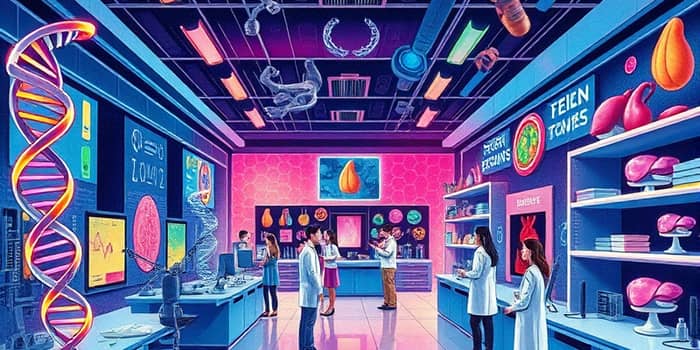
The biotechnology sector stands at a crossroads of science and innovation, driven by urgent health needs and transformative technologies. From tackling chronic diseases to pioneering gene therapies, the pace of advancement is breathtaking. In this article, we dissect the forces powering this revolution and offer practical insights for stakeholders ready to navigate a landscape projected to reach unprecedented heights.
Recent forecasts indicate that the global biotechnology market is projected to soar from USD 483.0 billion in 2024 to USD 5.85 trillion by 2034, at a CAGR of 12–13.6%. The U.S. segment alone is set to climb from USD 699.02 billion in 2025 to over USD 2 trillion by 2034, reflecting robust domestic research and commercial pipelines.
Fueling this expansion is a surge in diagnostics, therapeutic development, and biomanufacturing. More than 107,000 companies and 5,800 startups now operate worldwide, employing over 13.2 million professionals. Investor interest remains fierce, with an average funding round nearing USD 47.7 million.
Chronic diseases such as cancer, diabetes, and cardiovascular conditions remain leading mortality drivers, spurring demand for diagnostics and biotech-based therapies. In response, companies are deploying advanced platforms that integrate artificial intelligence, automation, and gene editing to compress R&D timelines and boost success rates.
The rise of CRISPR and other gene-editing tools has unlocked potential cures for rare genetic disorders. At the same time, 3D bioprinting is emerging as a game-changer for regenerative medicine. Automated microbiology labs, powered by robotics, are standardizing processes to ensure reproducibility and accelerate discovery.
Biotech’s explosive growth is underpinned by substantial funding and prolific patent activity. Over 268,000 patents and 42,000 grants underscore an environment rich in intellectual property. Investors, from legacy firms like Bayer to specialized VCs such as Arch Venture Partners and Orbimed, have collectively poured more than USD 50 billion into the sector.
Startups are the epicenters of disruption. Companies like 199 Biotechnologies (epigenetic reprogramming), Qeen Biotechnologies (personalized phage therapy), and Robotics Labs (lab automation) exemplify the fusion of niche expertise and scalable platforms. Strategic M&A activity is intensifying as established players seek to integrate cutting-edge technologies ahead of regulatory shifts.
Geographically, biotech innovation clusters in the U.S., Europe, China, India, and Germany remain dominant. City centers like Boston, San Francisco, London, and Shanghai function as magnets for talent, capital, and regulatory support. Emerging markets are streamlining approvals to attract more clinical trials and manufacturing projects.
Political winds also shape the landscape. Potential U.S. policy changes around drug pricing and vaccine research, alongside evolving regulations for psychedelics and cannabis, could open new frontiers in mental health therapies. Global efforts toward regulatory harmonization promise to reduce time-to-market and increase access in underpenetrated regions.
Looking ahead, a handful of converging forces will redefine biotech’s trajectory. Stakeholders must stay attuned to these drivers to maintain competitive advantage and deliver patient impact.
To thrive in this era of rapid change, companies and investors should prioritize cross-disciplinary collaboration. Integrating computational biology with wet-lab expertise accelerates discovery. Adopting agile regulatory strategies—such as rolling submissions and real-world evidence—can secure earlier approvals.
Additionally, forging partnerships with academic institutions and contract research organizations allows for shared risk and resource optimization. Finally, monitoring geopolitical trends and policy shifts empowers leaders to anticipate market access challenges and unlock new patient populations.
The biotechnology industry is on a historic growth curve, fueled by relentless innovation and expanding global needs. From AI-driven pipelines that cut drug discovery costs by up to 40% to groundbreaking gene therapies, the promise of better health outcomes has never been greater. By understanding market dynamics, embracing cutting-edge technologies, and staying agile amid regulatory change, stakeholders can turn today’s breakthroughs into tomorrow’s standard of care.
References













